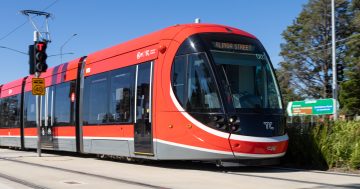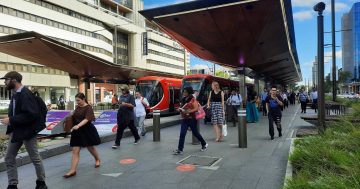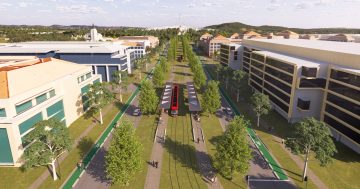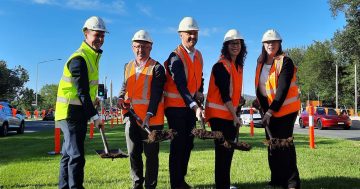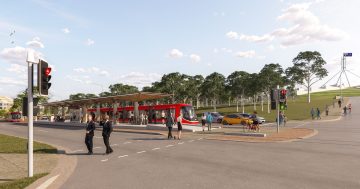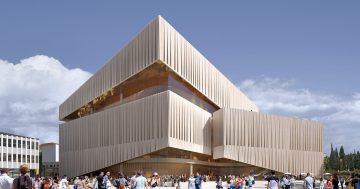
The Legislative Assembly. Is our model of government capable of meeting all the demands of a growing ACT? Photo: Michelle Kroll.
Take a look at the just uploaded precinct plans for light rail stage 2B and you get an idea of the scale of the project, its engineering challenges and the added infrastructure, such as overhead bridges that will be required.
It’s a big, expensive project.
Which is why it will need as much Commonwealth support as possible.
There are good reasons why the Feds should come to the party. This is the national capital, and the Commonwealth should support projects that support its institutions and enhance its liveability and status.
And if the Federal Parliament is going to say yay or nay, then the Commonwealth should be a key funder.
Light rail Stage 2B will also service the Commonwealth’s growing workforce, increasingly concentrated in the city, Parkes and Barton near the current and future lines.
The Federal Government has decided to develop a national security precinct in Barton, and several agencies, including the Tax Office, are relocating there as well.
In the city, a big new office building on the law courts car park site will house the Department of Employment and Workplace Relations, the Department of Education and the Australian Electoral Commission.
This involves thousands of Commonwealth public servants who will need a public transport system that can get them to and from work easily, unless you expect them all to drive or catch buses on roads that traffic modelling shows will become increasingly choked in the decades to come without taking action now.
Canberra will need a mass transit public transport system of some kind and most cities have a mix of rail, bus and active travel.
Undoubtedly, the light rail network is a costly ongoing project that will take decades to build and drain the Territory’s budget.
But it isn’t the only big infrastructure piece Canberra needs.
The pipeline includes the Canberra Theatre precinct development, the Northside Hospital, the convention centre and entertainment pavilion, and, of course, the stadium.
All of these are worthy and much needed.
But the call on the budget means the timeline for actual delivery is like the proverbial piece of string.
How long has the ACT been waiting for a new convention centre and stadium, both of which will require Commonwealth contributions?
Many blame the “tram” for the delay in other allegedly more worthy infrastructure.
But perhaps the question is: does a small self-governing territory with few resources and a limited revenue base have the capacity to provide the kind of infrastructure the national capital deserves?
Even with Commonwealth assistance – the ACT wants 50-50 funding agreements – a truckload of money, mostly borrowed, will be needed to build these once-in-a-generation assets.
Not to mention pay for the roads, schools and services Canberrans demand.
Do we need to face the fact that the notion of self-government based on a state model was flawed from the beginning and that a growing Canberra has reached the stage where how it is funded needs to be reviewed?
The whole point of Chief Minister Andrew Barr’s tax reform process is to provide a more reliable income stream to put the budget on a solid footing once the big projects are behind us, although the extension of light rail will go on for decades.
However, a growing city also comes with demands that the ACT, unless it discovers gold somewhere or becomes Australia’s Silicon Valley, will always struggle to meet.
Land is the currency that keeps the ACT afloat, but that is finite, and the government as a seller and developer is conflicted.
If the ACT is going to have and maintain the infrastructure it needs, the Commonwealth needs to step back in as the key financier of these big projects.
It does not mean ditching self-government or relinquishing rights but accepting the limitations of the current model and not trying to pretend that the ACT can do what some states, with far greater resources, are struggling to achieve.
To persist as we are means waiting far too long for important projects to be delivered, if at all, an unmanageable debt burden and degraded assets, such as the current Canberra Stadium.
Canberra is the national capital and home to the government workforce. It is a city, not a jurisdiction to be compared with the states.
It is a special case, and it requires a special arrangement.












